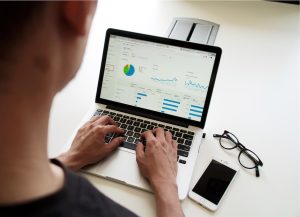Forex trading has become one of the most popular ways for individuals to make money online. It’s a market that operates 24 hours a day, five days a week, and has an enormous amount of liquidity, making it attractive to traders of all levels of experience. However, forex trading can also be incredibly risky, and it’s important to understand the various terms and concepts associated with it. One such term is “forex 3% margin.”
Forex margin is the amount of money required by a trader to open a position. It’s essentially a deposit that acts as collateral against any potential losses. When a trader opens a position, the broker will require a certain amount of margin to be deposited, which will depend on the size of the position and the leverage being used. Leverage is the ability to control a larger position with a smaller amount of capital. For example, if a trader has a leverage of 100:1, they can control a position worth $100,000 with just $1,000 of capital.
Forex margin is usually expressed as a percentage, and it can vary depending on the broker and the currency pair being traded. Forex 3% margin means that the trader needs to deposit 3% of the total position value as margin. For example, if a trader is opening a position worth $100,000, they would need to deposit $3,000 as margin.
The purpose of margin is to protect both the trader and the broker from potential losses. If a trader’s position goes against them, they can lose more than their initial deposit. In this case, the broker may issue a margin call, which requires the trader to deposit more money to cover the losses. If the trader is unable to deposit more money, the position may be liquidated, and any remaining funds returned to the trader.
Forex 3% margin is a popular choice among traders because it allows them to control larger positions with less capital. However, it’s important to note that higher leverage also means higher risk. If a trader is using a leverage of 100:1, a 1% move in the currency pair could result in a 100% loss of their initial deposit.
Traders should also be aware of the margin requirements set by their broker. Different brokers may have different margin requirements, and these can change depending on market conditions. For example, if volatility increases, a broker may increase margin requirements to protect themselves from potential losses.
In addition to margin requirements, traders should also be aware of other risks associated with forex trading. These include market risk, counterparty risk, and operational risk. Market risk refers to the potential for losses due to changes in market conditions, such as exchange rates or interest rates. Counterparty risk refers to the risk that the other party in a trade may default on their obligations. Operational risk refers to the risk of losses due to errors or malfunctions in trading systems or processes.
In conclusion, forex 3% margin is a term used to describe the amount of margin required by a trader to open a position. It allows traders to control larger positions with less capital, but also comes with higher risk. Traders should be aware of the margin requirements set by their broker, as well as other risks associated with forex trading. By understanding these concepts, traders can make informed decisions and manage their risk effectively.






